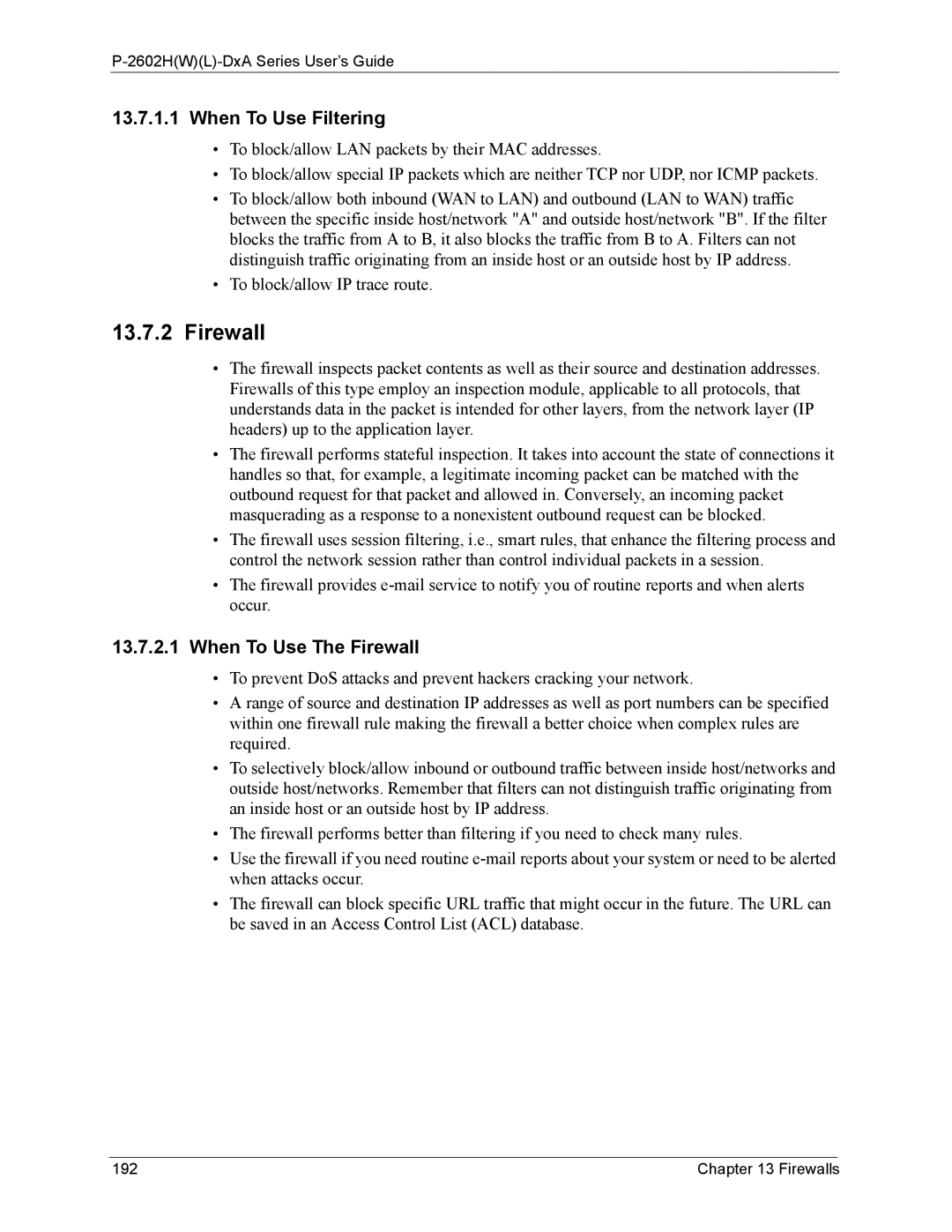
P-2602H(W)(L)-DxA Series User’s Guide
13.7.1.1When To Use Filtering
•To block/allow LAN packets by their MAC addresses.
•To block/allow special IP packets which are neither TCP nor UDP, nor ICMP packets.
•To block/allow both inbound (WAN to LAN) and outbound (LAN to WAN) traffic between the specific inside host/network "A" and outside host/network "B". If the filter blocks the traffic from A to B, it also blocks the traffic from B to A. Filters can not distinguish traffic originating from an inside host or an outside host by IP address.
•To block/allow IP trace route.
13.7.2Firewall
•The firewall inspects packet contents as well as their source and destination addresses. Firewalls of this type employ an inspection module, applicable to all protocols, that understands data in the packet is intended for other layers, from the network layer (IP headers) up to the application layer.
•The firewall performs stateful inspection. It takes into account the state of connections it handles so that, for example, a legitimate incoming packet can be matched with the outbound request for that packet and allowed in. Conversely, an incoming packet masquerading as a response to a nonexistent outbound request can be blocked.
•The firewall uses session filtering, i.e., smart rules, that enhance the filtering process and control the network session rather than control individual packets in a session.
•The firewall provides
13.7.2.1When To Use The Firewall
•To prevent DoS attacks and prevent hackers cracking your network.
•A range of source and destination IP addresses as well as port numbers can be specified within one firewall rule making the firewall a better choice when complex rules are required.
•To selectively block/allow inbound or outbound traffic between inside host/networks and outside host/networks. Remember that filters can not distinguish traffic originating from an inside host or an outside host by IP address.
•The firewall performs better than filtering if you need to check many rules.
•Use the firewall if you need routine
•The firewall can block specific URL traffic that might occur in the future. The URL can be saved in an Access Control List (ACL) database.
192 | Chapter 13 Firewalls |
